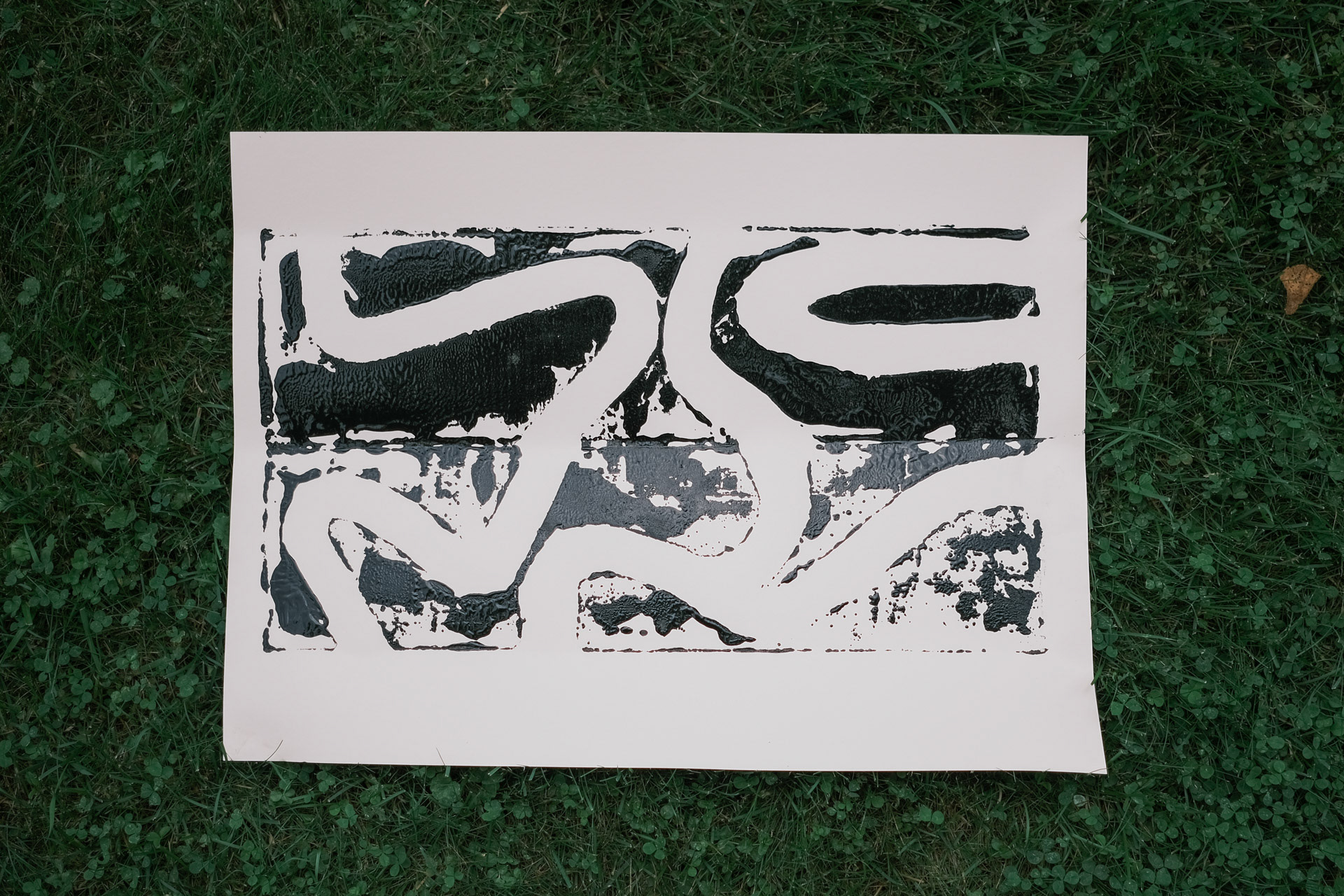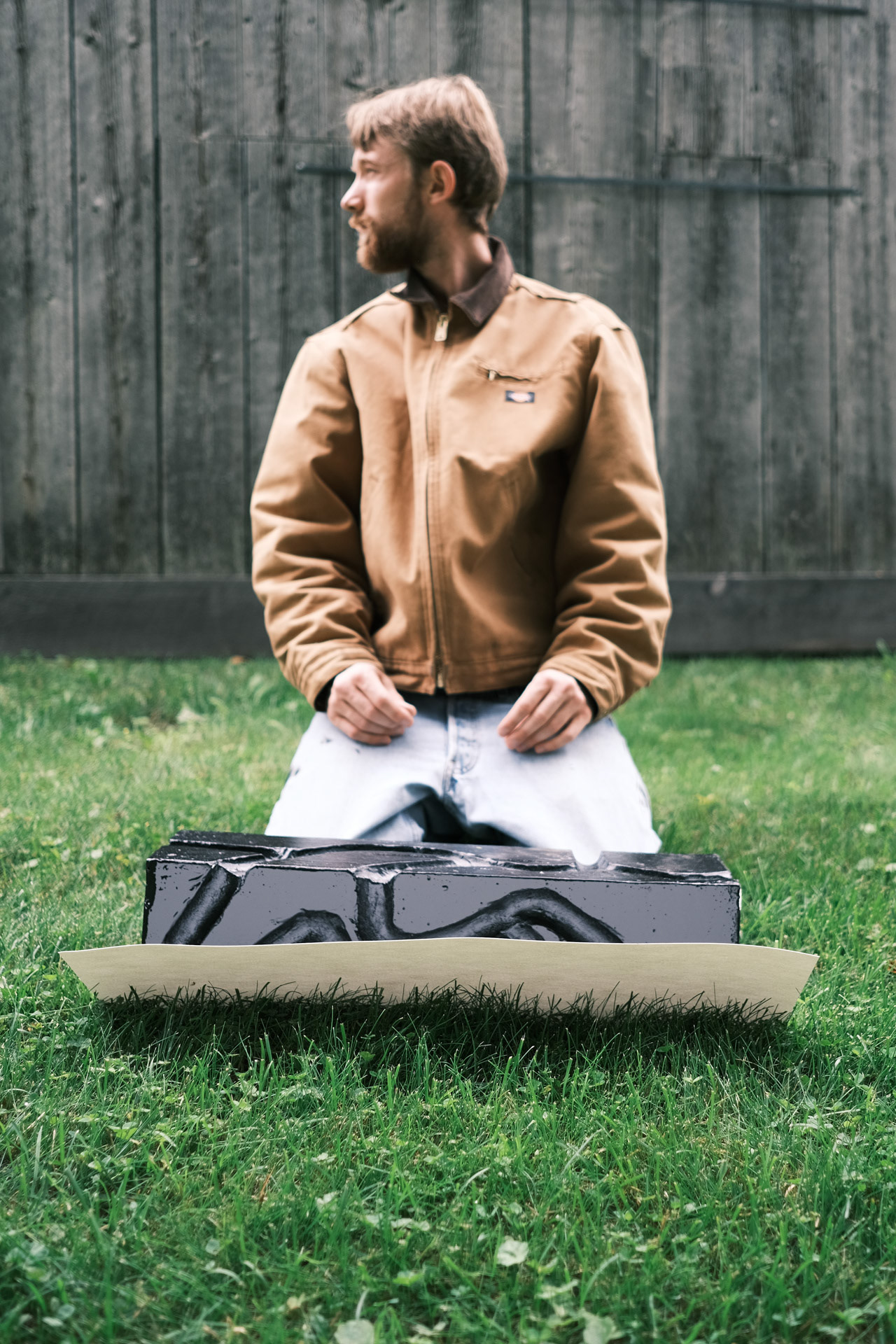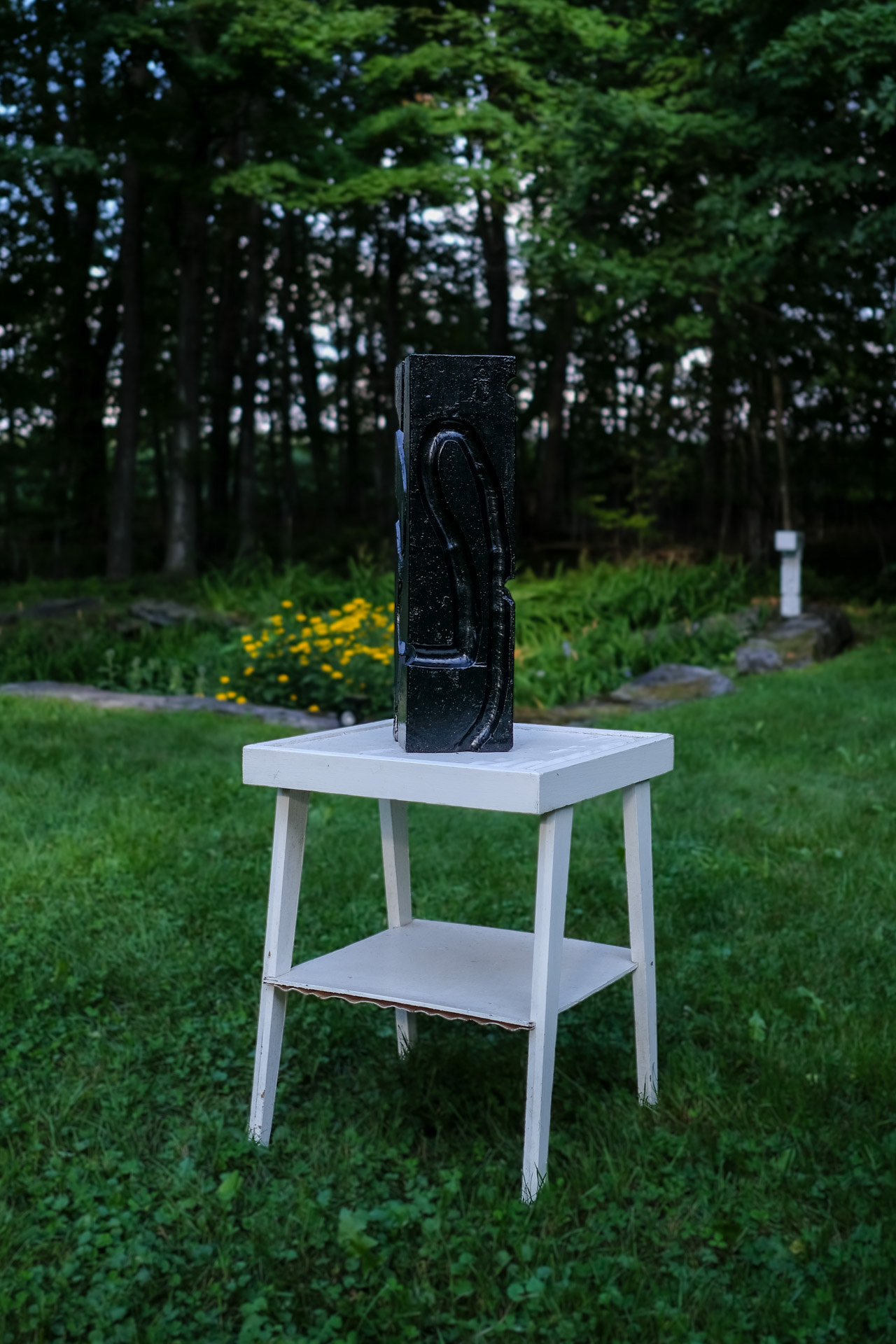Something interesting happens when you translate three-dimensional sculpture into two-dimensional prints and paintings. Many things we take for granted about the sculpture like its textures and geometry are seen from a different perspective on paper. For example, the rough texture tends to blend into the sculpture, but has a binary quality on paper where only the very high and very low spots are represented.
One of the exhibited prints depicts two sides of the original sculpture, giving new perspective to the carved deterministic pathways. When seen on the same plane, the pathways become easier to follow. Imagine your life's pathways laid out on a piece of paper instead of on an object that only allows you to see part of it at a time.




